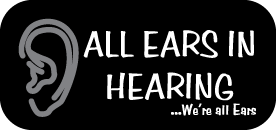How to manage hearing loss?

Managing hearing loss can be difficult and can be different for everyone. There are a few different ways that people manage their hearing loss. Some people use hearing aids, while others use sign language or lip reading to help them communicate. It is important to find the best way to manage your hearing loss that works for you. However, the first step is to see your local doctor or a hearing specialist to find out more about the options available.
Hearing Aids
The common way to manage hearing loss is to use hearing aids. Hearing aids amplify sound so that it is easier to hear. There are different types of hearing aids, and the type that is right for you will depend on the severity of your hearing loss. Hearing Aids are small devices that you put in or around your ear. You can choose from a custom hearing aid, RITE, BTE, and Invisible hearing aid.
- Custom Hearing Aid: They are made to fit your ear perfectly and they come in a variety of colors. There are different types such as In-the-ear (ITE), In-the-canal (ITC) and Completely-in-the-canal (CIC).
- Receiver-In-The-Ear: Receiver-in-the-ear (RITE) hearing aids are small and discreet. The receiver (amplifier) is located in the ear canal, while the rest of the hearing aid sits behind the ear.
- Behind-The-Ear: A Behind-the-ear (BTE) hearing aid has a case that rests behind your ear and a tube that goes into your ear canal. The BTE hearing aid style is the largest type of hearing aid, but it also has the most power.
- Invisible Hearing Aid: There are two types of invisible hearing aids:
- Invisible In the Canal (IIC) and
- Completely-in-the-Canal (CIC): As their name suggests, these hearing aids are designed to be less visible when worn.
Assistive Listening Devices
There are also assistive devices that can help you communicate with others. Assistive listening devices can make it easier to hear or communicate with others in a variety of ways. These include amplified telephones, hearing aid compatible phones, and smartphones as well as alerting systems for the visually impaired that provide text equivalent speech output on an LCD screen when sounded off at arm’s length distance from the user.
Here are some of the Assistive Listening Devices you could use.
- Amplified telephones: These phones have an amplifier that makes it easier to hear the person on the other end. There are a variety of amplified phones available, including cordless and corded phones.
- Hearing aid compatible phones: Hearing aid compatible phones are designed to work with hearing aids. There is a variety of hearing aid compatible phones available, including cordless and corded phones.
- Smartphones: Smartphones can be used with a variety of apps that can help you hear or communicate better. There are a variety of apps available, including ones that provide text-to-speech, speech-to-text, and captioning services.
- Alerting systems for the visually impaired: These systems provide text equivalent speech output on an LCD screen when sounded off at arm’s length distance from the user.
- Hearing Loops: Hearing loops are systems that transmit sound directly to your hearing aid. Hearing loops can be used in a variety of settings, including auditoriums, theatres, and places of worship.
- FM Systems: FM systems transmit sound from a microphone to a receiver that you wear. FM systems can be used in a variety of settings, including classrooms and meetings. FM frequency radio transmission is the technology used to broadcasts sounds from one sound system, which are picked up by listeners with FM receivers. The music can be heard through headphones, or a neck loop and this option eliminates any need for ear cups because they have an emitted signal that helps those who suffer hearing loss accomplish their educational goals in schools, but these systems also work great for adults in large meeting rooms or crowded places.
- Infrared Systems (IR): Infrared systems transmit sound using invisible infrared light. Infrared systems can be used in a variety of settings, including auditoriums, theaters, and places of worship. The technology of IR systems has been around for a long time and is still being improved upon. They use invisible light waves to send speech or music from one place, such as an outdoor speaker system, to another, like an IR receiver that a listener wears. The advantage of using IR transmission is that the waves do not go through walls, so the sound quality is usually very good.

Cochlear Implants
Another option is to use a cochlear implant. This is a device that is surgically implanted into the ear, and it allows people to hear sounds that they would not be able to hear with hearing aids. The external part of the device picks up sounds and sends them to an internal microphone where they are processed before being sent back out again as vibrations that reach the ears through air pressure changes or sound waves traveling along with momentum!
In addition to that, a thin wire and small electrodes lead to the cochlea, which is part of the inner-ear hearing organ. The signal from this device sends signals through nerves into hair cells that produce sound information for sending it on down towards the brain where you can hear these sounds.
Cochlear implants may be the answer for those who struggle to understand speech when their ears are deafened by loud noises. When fitted with appropriately tuned devices, adults can greatly increase how well they hear sound while children and infants also experience improvements in comprehension skills due to cochlea stimulation from this surgery.

Sign Language
Another option for communication is to use sign language. This is a language that uses hand gestures, body language, and facial expressions to communicate. It is a visual language, so it does not require the use of sound. This can be a good option for people who are deaf or have severe hearing loss.
- Auditory-Oral. Auditory-oral communication is a method of communication that uses both hearing and speech. This can be a good option for people who have some hearing loss. It involves using lip reading, sign language, and other strategies to communicate.
- Aural Rehabilitation. Aural rehabilitation is another option for people with hearing loss. It is a program that helps people learn how to manage their hearing loss. It can help people learn how to use hearing aids, listen to the speech, and communicate better.
- Bilingualism. Bilingualism is another option for communication. It is a way of using two languages to communicate. This can be a good option for people who have hearing loss and speak two languages.
- Cued Speech. Cued speech is a system of communication that uses hand gestures to help people understand the sounds of speech. It can be a good option for people who have hearing loss.
- Total Communication. Total communication is a way of using all forms of communication to communicate. This can be a good option for people who have hearing loss.
Conclusion:
There are many ways to manage hearing loss. Some people use hearing aids, while others use sign language or lip reading to help them communicate. It is important to find the best way to manage the hearing loss that works for you. Talk to your doctor or a hearing specialist to find out more about the options available to you.
Using all methods of communication is ideal for those with hearing loss. Different individuals will have different levels of success with various modes of communication, so it is important to try out several before settling on the best method for you. Ask for help from a doctor or hearing specialist to find the best way to manage your hearing loss.
DISCLAIMER:
The information on this website is provided for educational purposes only. We do not support, nor recommend any products or treatments without proper hearing diagnostic and proper hearing evaluation. All users must seek professional advice before beginning treatment as well as inform themselves of known side effects/risks associated with said procedure(s).
Read more with similar topics below
Of our 5 senses, hearing is probably the most important for our feeling of connection to the world around us. It allows us to communicate with friends and family, enjoy the sounds around us like music or nature and helps keep us safe by alerting us to warning signals, the various sounds in traffic and other forms of danger. To properly understand how we conduct a hearing test, it is best to understand how the ear works.
Communication is so important for everyday living. Wearing hearing instruments are the first step in successfully restoring a healthy communication relationship with your family and friends. Good quality hearing devices are a good solution to improve speech understanding, but even with the technology today, hearing instruments have limitations and can not restore hearing back to normal.
